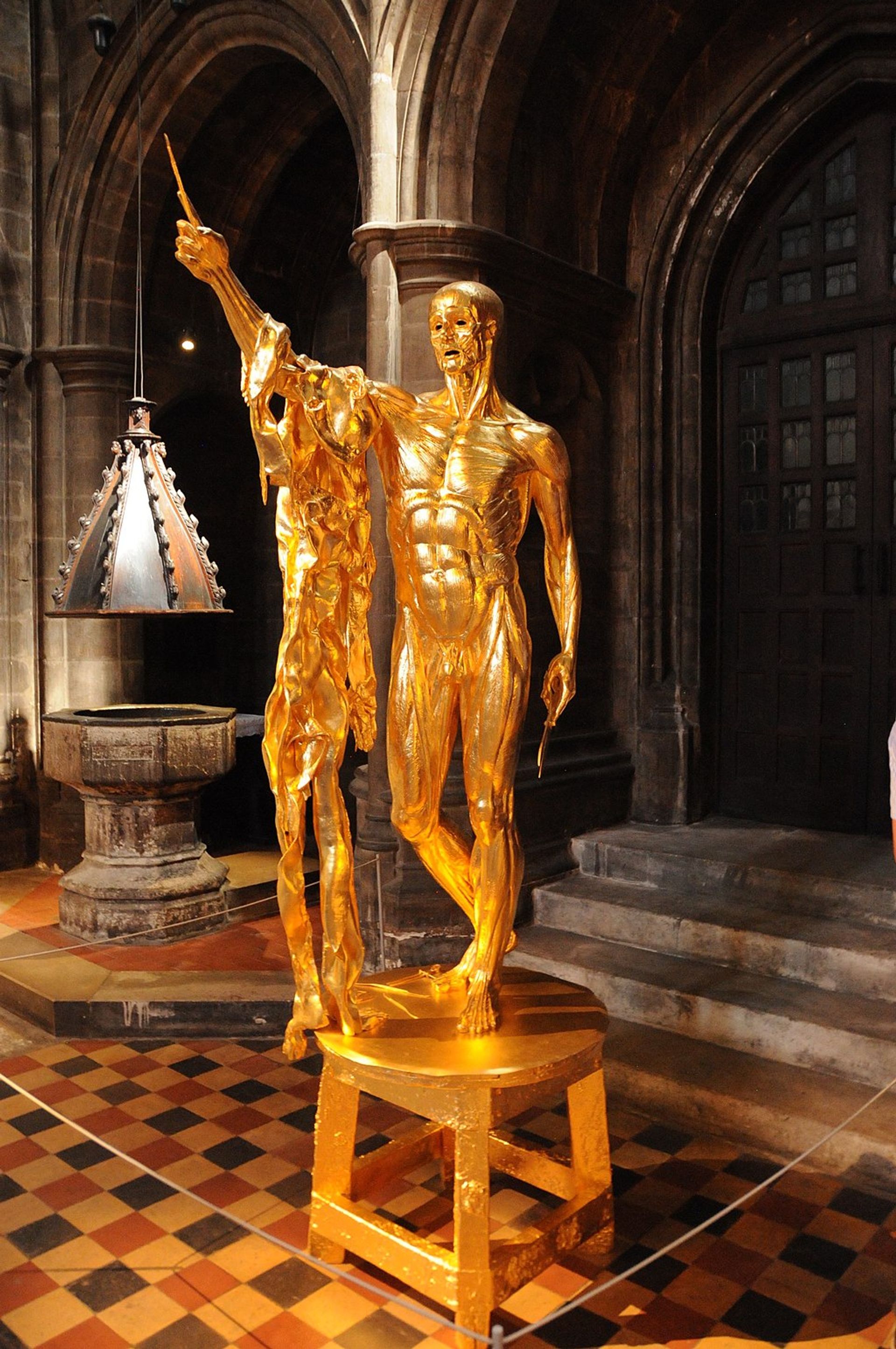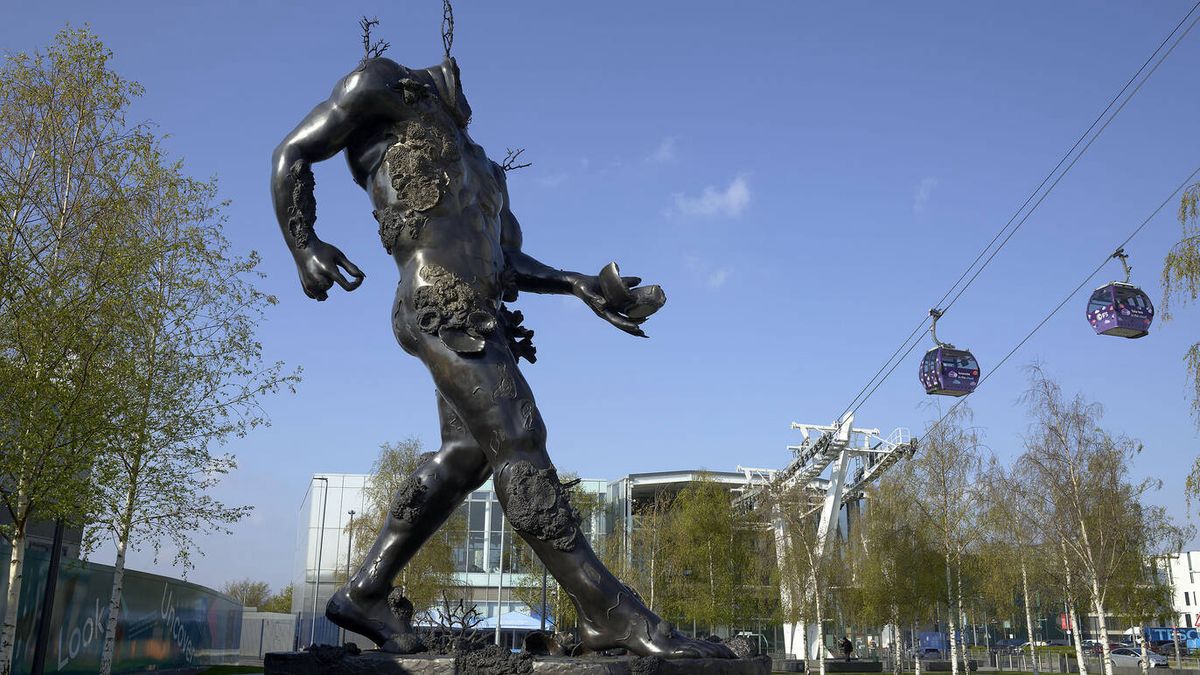They say that wherever you go in London, you’re never more than four feet away from a Damien Hirst sculpture (that is little bit of a fib to be honest). Nevertheless, his works keep popping up in the capital. Last year we reported that the property developer Knight Dragon planned to install Hirst’s 18-metre-high bronze sculpture Demon with Bowl (2014) by the Thames on the Greewnich Peninsula. The massive headless effigy is now in place, towering over the Thames cable car and dwarfing the O2 arena. The gargantuan piece is part of Hirst’s Treasures from the Wreck of the Unbelievable series and was first presented in the courtyard of Palazzo Grassi during the 2017 edition of the Venice Biennale. Hirst already has other works on the peninsula from the same series, including The Mermaid and Hydra and Kali, making this part of town a smorgasbord of art by the Young British Artists (YBAs).
Meanwhile across town, Hirst devotees can see the artist’s dramatic depiction of St Bartholomew, one of the original 12 disciples who was skinned alive, in London’s oldest parish church. Hirst’s polished gold version of the doomed disciple, titled Saint Bartholomew, Exquisite Pain, stands in the south transept of the 900-year-old St Bartholomew the Great church, near Smithfield market in the City of London.

Hirst's Saint Bartholomew, Exquisite Pain (2008) in London's St Bartholomew the Great church, West Smithfield
Photo: Davepastor
The church website points out that “the instrument in [the statue’s] hand is not a standard knife, but a scalpel, used in the hospital across the road which also bears the saint’s name”. Hirst’s take is slightly more prosaic. “I added the scissors because I thought Edward Scissorhands was in a similarly tragic yet difficult position,” he told The London Dead blog.


